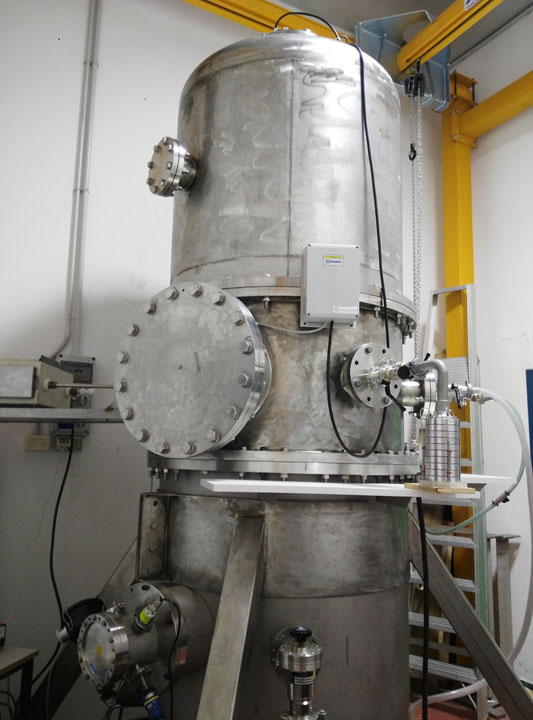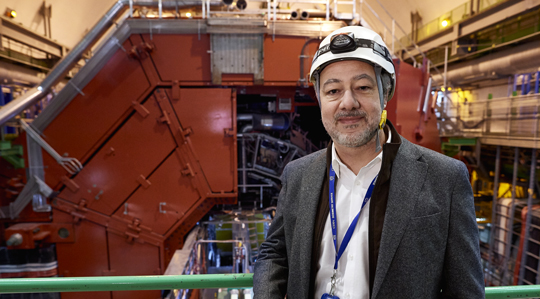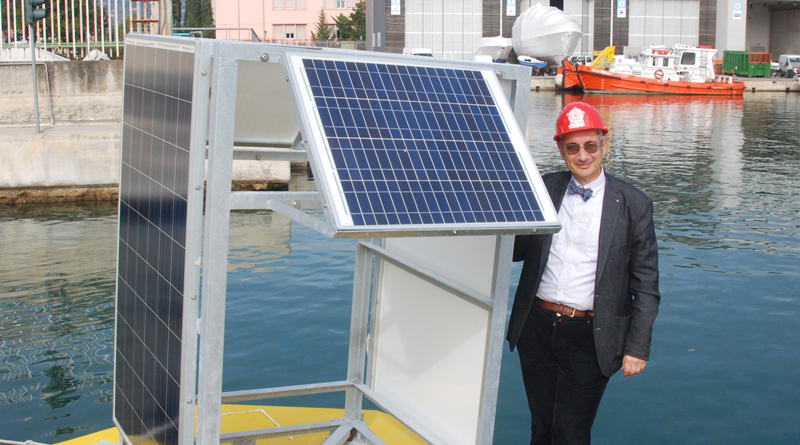THE EUROPEAN NETWORK OF ATMOSPHERIC SIMULATION CHAMBERS

EUROCHAMP 2020, the European project for the creation of a network of atmospheric simulation chambers, in which INFN is participating with the construction of the first Italian chamber, ChAMBRe, has got underway. Creating artificial atmospheres under controlled conditions, the atmospheric simulation chambers allow the formation and transformation of pollutants in the atmosphere, cloud formation, the action of cosmic rays in the production of aerosols, the interaction between the constituents of the atmosphere and sunlight and much more to be studied. In the coming years, ChAMBRe will, in particular, study the behaviour of bio-aerosols, i.e. the fraction of the aerosol consisting of living organisms, in the presence of different levels and types of pollutants, in order to understand, for example, whether or not air pollution facilitates the dispersion of certain bacteria in the atmosphere. The main structure of ChAMBRe was built by a research team of the Genoa INFN section that is now preparing to perform the first functionality tests. By participating in EUROCHAMP, INFN will also become part of a Joint Research Unit (JRU) called ACTRIS-Italia (Aerosols, Clouds and Trace gases Research InfraStructure), whose goal is to create an Italian network of national and international importance dedicated to the observation and study of the atmosphere, pollution and climate change. In addition to the INFN Genoa section, also LABEC in Florence (Laboratory of Nuclear Techniques for the Cultural Heritage) and the INFN Milan section will work in the infrastructure. INFN is participating in the project, for which the EU has allocated 9 million euros, with 14 other research institutes from more than 10 Countries.




 During the "International Day of Women and Girls in Science", established by the General Assembly of the United Nations to
During the "International Day of Women and Girls in Science", established by the General Assembly of the United Nations to  Another Italian is heading one of the four major experiments at the Large Hadron Collider (LHC) at CERN in Geneva. Federico Antinori, an INFN researcher, is in fact the new head of ALICE (A Large Ion Collider Experiment), dedicated in particular to the study of quark-gluon plasma, a state of matter believed to have existed soon after the Big Bang. ALICE is an international collaboration of more than 1,500 physicists, engineers and technicians from 37 countries worldwide. Federico Antinori is a researcher of the Padua Section of the National Institute for Nuclear Physics (INFN). A graduate of the University of Genoa with a thesis on the WA82 experiment, implemented at the SPS accelerator at CERN, already in the early 90s he started to study ultra-relativistic nucleus-
Another Italian is heading one of the four major experiments at the Large Hadron Collider (LHC) at CERN in Geneva. Federico Antinori, an INFN researcher, is in fact the new head of ALICE (A Large Ion Collider Experiment), dedicated in particular to the study of quark-gluon plasma, a state of matter believed to have existed soon after the Big Bang. ALICE is an international collaboration of more than 1,500 physicists, engineers and technicians from 37 countries worldwide. Federico Antinori is a researcher of the Padua Section of the National Institute for Nuclear Physics (INFN). A graduate of the University of Genoa with a thesis on the WA82 experiment, implemented at the SPS accelerator at CERN, already in the early 90s he started to study ultra-relativistic nucleus- Elected head of KM3NeT, the international project for the construction of a new generation submarine telescope dedicated
Elected head of KM3NeT, the international project for the construction of a new generation submarine telescope dedicated  Also galaxy clusters shine with gamma light. This is the conclusion reached by a group of researchers from INAF, INFN, the Universities of Rome Tre, Turin, Aachen, Manchester, Beijing and the International School for Advanced Studies (SISSA), in analysing the data collected over six and a half years of the NASA Fermi space telescope mission, in which Italy is participating with the Italian Space Agency (ASI), INAF and INFN. From the study of galaxy clusters, astronomers obtain crucial information on high-energy photon emission and particle acceleration mechanisms. For this reason, they have been observed in
Also galaxy clusters shine with gamma light. This is the conclusion reached by a group of researchers from INAF, INFN, the Universities of Rome Tre, Turin, Aachen, Manchester, Beijing and the International School for Advanced Studies (SISSA), in analysing the data collected over six and a half years of the NASA Fermi space telescope mission, in which Italy is participating with the Italian Space Agency (ASI), INAF and INFN. From the study of galaxy clusters, astronomers obtain crucial information on high-energy photon emission and particle acceleration mechanisms. For this reason, they have been observed in

